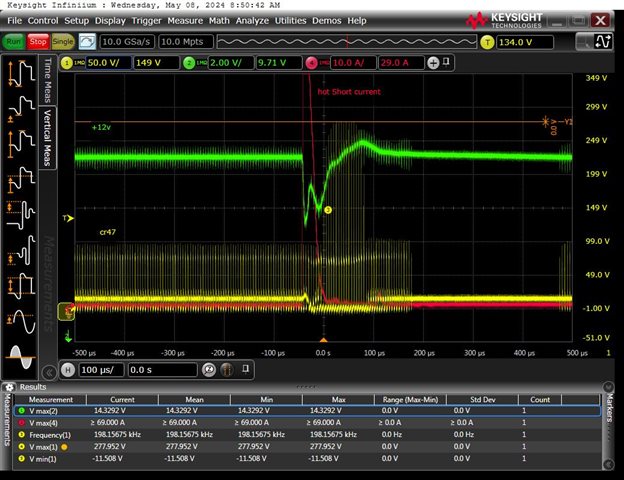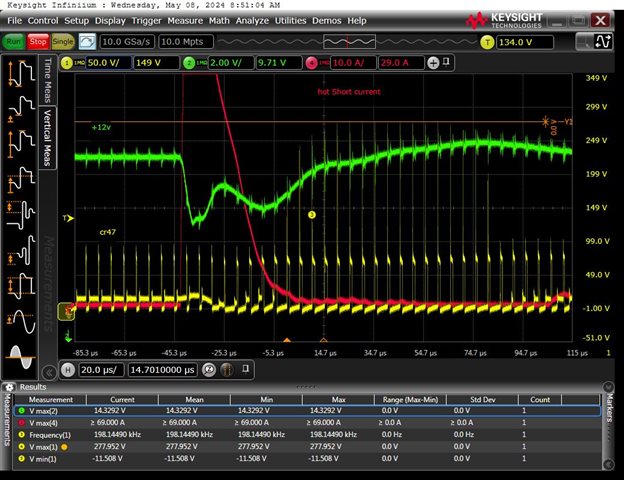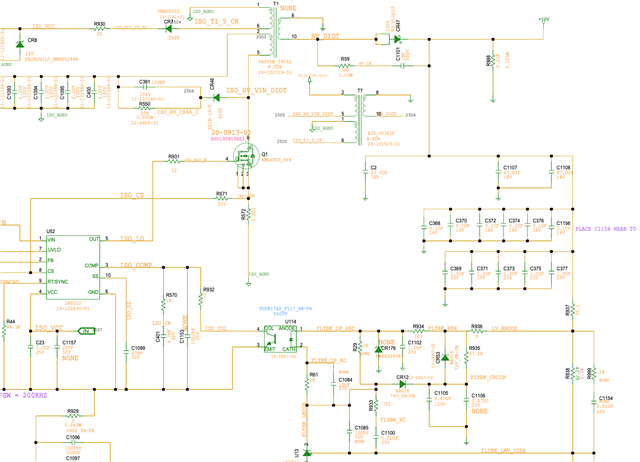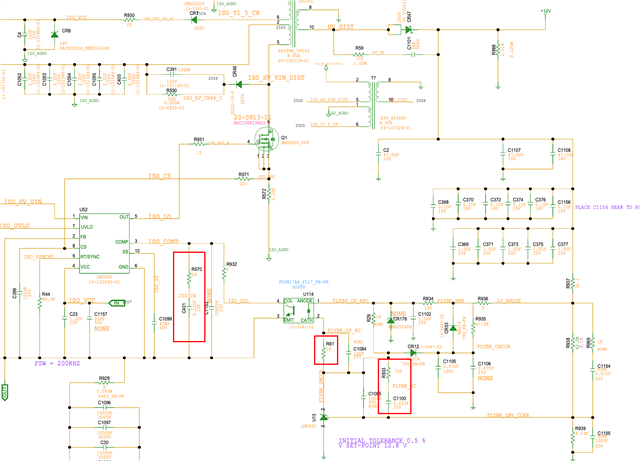Hi Experts,
When a very short and high current pulse occurs on flyback output, noticed the 12Vout has a dip and then the operation mode change from DCM to CCM for a few cycles to recover.
Is the operation mode change expected?
During this very short CCM duration, the SW stress on pri MOSFET and sec Diode is quite high, which is exceeding the rated voltage of FET and Diode. How can this be mitigated?
Here are the waveforms.
Vin 60V, Vout 12.8V, turn ratio 1:1, primary inductance is 8uH.
Yellow- voltage across the secondary diode (Postive tied to Cathode).
Green- flyback output voltage
Red- flyback output current spike

zoomin.

further zoom in.

Here is the schematic.

Thanks.


